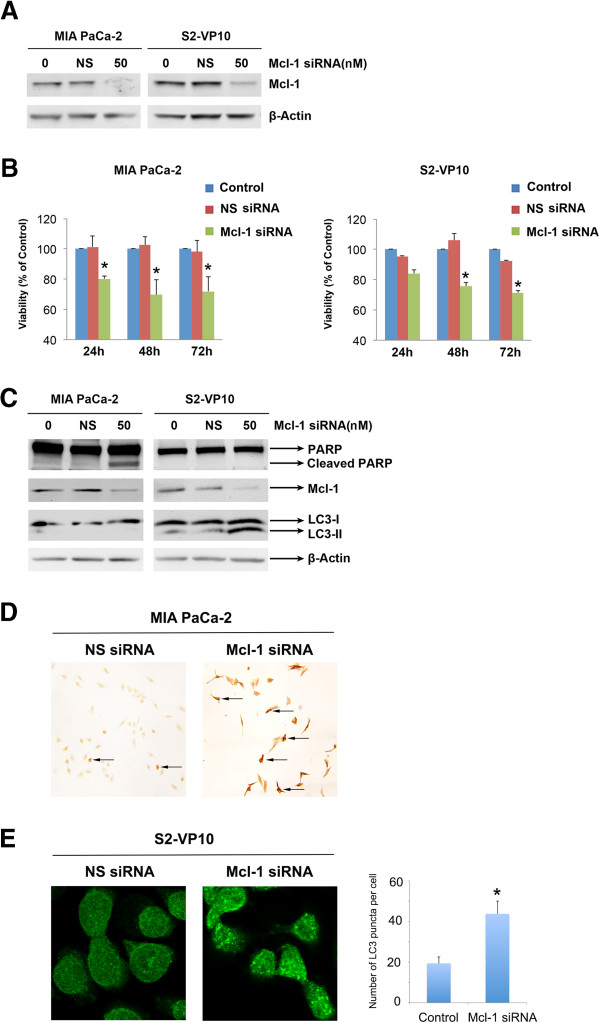Figure 2.
Loss of Mcl-1 causes cell death in pancreatic cancer cells. A. Mcl-1- specific siRNA causes loss of Mcl-1 protein in both MIA PaCa-2 and S2-VP10 cells. Protein lysates from Mcl-1 specific siRNA or non-silencing RNA were harvested and assessed for Mcl-1 knockdown. β-Actin was used as a loading control. B. Mcl-1 knockdown decreases viability in both MIA PaCa-2 and S2-VP10 cells. Cell viability was assessed by a WST-8 assay at times indicated and represented as% viability of untreated cells. Loss of Mcl-1 results in decreased cell viability in both cell lines. C. Lysates from Mcl-1 specific or control siRNA were assessed for levels of PARP, Mcl-1 and LC3-II 48 hours post-transfection. Mcl-1 siRNA treated MIA PaCa-2, but not S2-VP10 cells show PARP cleavage, a hallmark of apoptotic cell death. However, LC3-II, a marker for autophagy, was present in Mcl-1 siRNA treated S2-VP10 but not in MIA PaCa-2 cells. D. Mcl-1 siRNA transfection induces apoptosis in MIA PaCa-2 pancreatic cancer cells. Cell apoptosis was detected by TUNEL assay. Cells were transfected with Mcl-1 siRNA on day 2 and stained 48 hours after transfection. The arrow indicates apoptotic cells. E. Treatment of S2-VP10 cells with 50 nM Mcl-1 siRNA for 48 hours shows a significant increase in the LC3 punctate staining pattern when compared with untreated cells. Results shown are representative of 3 independent experiments.

